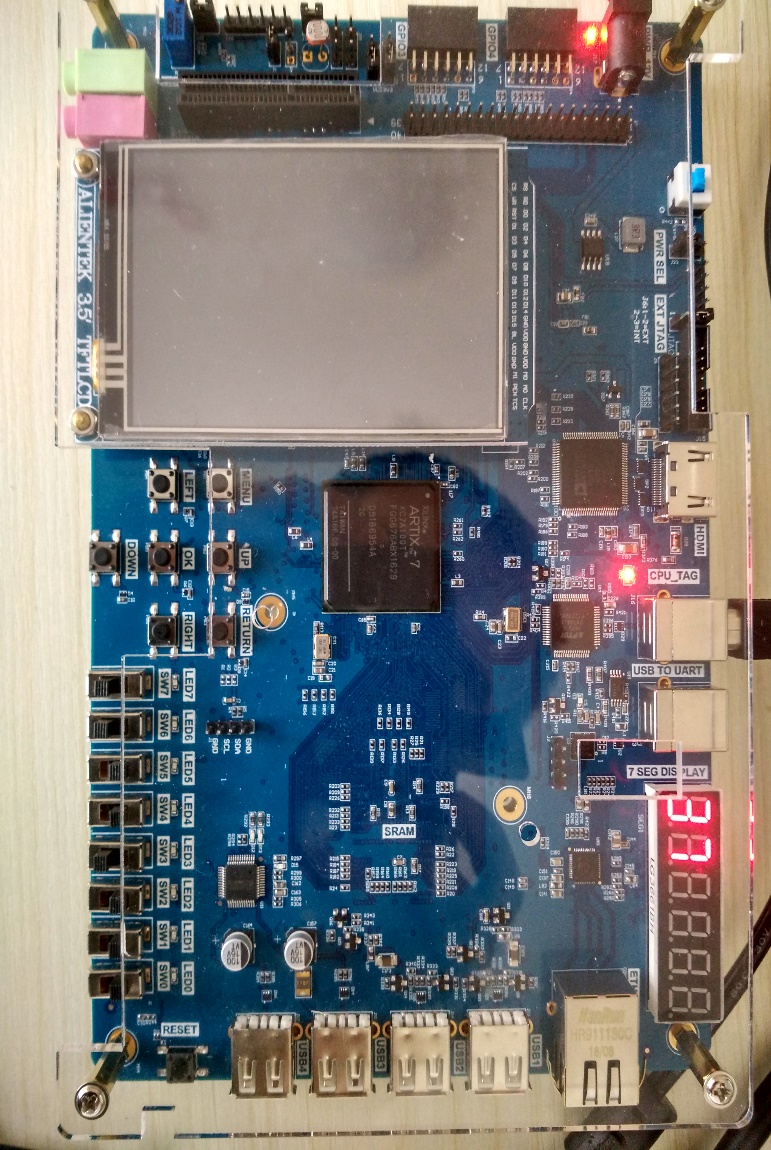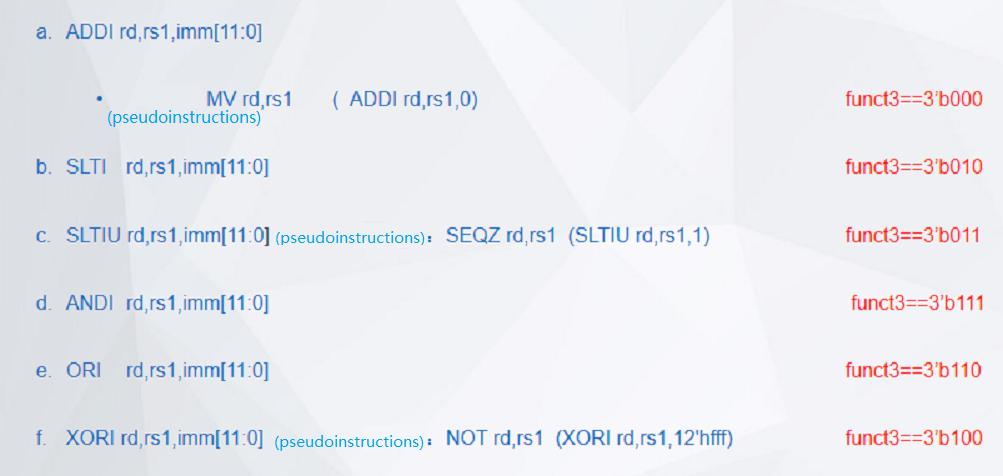Learning the basic principles of the different IIC bus, mastering the IIC communication protocol, Xilinx Risc-V Board Tutorial : IIC Protocol Transmission – FII-PRX100 FPGA Board Experiment 12
Experiment 12 IIC Protocol Transmission
1.Experiment Objective
There is an IIC interface EEPROM chip 24LC02 in the test plate, capacity sized 2 kbit (256 bite). Since the data is not lost after the EEPROM is powered down, users can store some hardware setup data or user information.
Learning the basic principles of the different IIC bus, mastering the IIC communication protocol
Master the method of reading and writing EEPROM
Joint debugging using logic analyzer
2.Experiment Requirement
Correctly write a number to any address in the EEPROM (this experiment writes to the register of 8’h03 address) through the FPGA (here changes the written 8-bit data value by (SW7~SW0)). After writing in successfully, read the data as well. The read data is displayed directly on the segment decoders.
Download the program into the FPGA and press the Up button PB2 to execute the data write EEPROM operation. Press the Return button PB3 to read the data that was just written.
-
- Determine whether the value read is correct or not by reading the value displayed on the segment decoders. If the segment decoders display the same value as written value, the experiment is successful.
Analyze the correctness of the internal data with ILA and verify it with the display of the segment decoders.
3.Introduction to the IIC Agreement
3.1 The Overall Timing Protocol of IIC Is as Follows
Bus idle state: SDA, SCL are high
Start of IIC protocol: SCL stays high, SDA jumps from high level to low level, generating a start signal
IIC read and write data phase: including serial input and output of data and response model issued by data receiver
IIC transmission end bit: SCL is high level, SDA jumps from low level to high level, and generates an end flag. See Fig 12. 1.

Fig 12. 1 Timing protocol of IIC
3.2 IIC Device Address
Each IIC device has a device address. When some device addresses are shipped from the factory, they are fixed by the manufacturer (the specific data can be found in the manufacturer’s data sheet). Some of their higher bits are determined, and the lower bits can be configured by the user according to the requirement. The higher four-bit address of the EEPROM chip 24LC02 used by the develop board has been fixed to 1010 by the component manufacturer. The lower three bits are linked in the develop board as shown below, so the device address is 1010000. (The asterisk resistance indicates that it is not soldered). See Fig 12.2.

Fig 12. 2 IIC device schematics
4. Main Code
| module iic_com(
clk,rst_n, data,
sw1,sw2, scl,sda, iic_done, dis_data ); input clk; // 50MHz input rst_n; input sw1,sw2; inout scl; inout sda; output[7:0] dis_data; input [7:0] data ; output reg iic_done =0 ; reg [7:0] data_tep; reg scl_link ; reg [19:0] cnt_5ms ; reg sw1_r,sw2_r; reg[19:0] cnt_20ms; always @ (posedge clk or negedge rst_n) if(!rst_n) cnt_20ms <= 20’d0; else cnt_20ms <= cnt_20ms+1’b1; always @ (posedge clk or negedge rst_n) if(!rst_n) begin sw1_r <= 1’b1; sw2_r <= 1’b1; end else if(cnt_20ms == 20’hfffff) begin sw1_r <= sw1; sw2_r <= sw2; end //———————————————
reg[2:0] cnt; reg[8:0] cnt_delay; reg scl_r; always @ (posedge clk or negedge rst_n) if(!rst_n) cnt_delay <= 9’d0; else if(cnt_delay == 9’d499) cnt_delay <= 9’d0; else cnt_delay <= cnt_delay+1’b1; always @ (posedge clk or negedge rst_n) begin if(!rst_n) cnt <= 3’d5; else begin case (cnt_delay) 9’d124: cnt <= 3’d1; //cnt=1:scl 9’d249: cnt <= 3’d2; //cnt=2:scl 9’d374: cnt <= 3’d3; //cnt=3:scl 9’d499: cnt <= 3’d0; //cnt=0:scl default: cnt<=3’d5; endcase end end `define SCL_POS (cnt==3’d0) //cnt=0:scl `define SCL_HIG (cnt==3’d1) //cnt=1:scl `define SCL_NEG (cnt==3’d2) //cnt=2:scl `define SCL_LOW (cnt==3’d3) //cnt=3:scl always @ (posedge clk or negedge rst_n) if(!rst_n) data_tep <= 8’h00; else data_tep<= data ; // always @ (posedge clk or negedge rst_n) if(!rst_n) scl_r <= 1’b0; else if(cnt==3’d0) scl_r <= 1’b1; //scl else if(cnt==3’d2) scl_r <= 1’b0; //scl assign scl = scl_link?scl_r: 1’bz ; //———————————————
`define DEVICE_READ 8’b1010_0001 `define DEVICE_WRITE 8’b1010_0000 `define WRITE_DATA 8’b1000_0001 `define BYTE_ADDR 8’b0000_0011 reg[7:0] db_r; reg[7:0] read_data; //———————————————
parameter IDLE = 4’d0; parameter START1 = 4’d1; parameter ADD1 = 4’d2; parameter ACK1 = 4’d3; parameter ADD2 = 4’d4; parameter ACK2 = 4’d5; parameter START2 = 4’d6; parameter ADD3 = 4’d7; parameter ACK3 = 4’d8; parameter DATA = 4’d9; parameter ACK4 = 4’d10; parameter STOP1 = 4’d11; parameter STOP2 = 4’d12; reg[3:0] cstate; reg sda_r; reg sda_link; reg[3:0] num; always @ (posedge clk or negedge rst_n) begin if(!rst_n) begin cstate <= IDLE; sda_r <= 1’b1; scl_link <= 1’b1; sda_link <= 1’b1; num <= 4’d0; read_data <= 8’b0000_0000; cnt_5ms <=20’h00000 ; iic_done<=1’b0 ; end else case (cstate) IDLE: begin sda_link <= 1’b1; scl_link <= 1’b1; iic_done<=1’b0 ; if(!sw1_r || !sw2_r) begin db_r <= `DEVICE_WRITE; cstate <= START1; end else cstate <= IDLE; end START1: begin if(`SCL_HIG) begin sda_link <= 1’b1; sda_r <= 1’b0; cstate <= ADD1; num <= 4’d0; end else cstate <= START1; end ADD1: begin if(`SCL_LOW) begin if(num == 4’d8) begin num <= 4’d0; sda_r <= 1’b1; sda_link <= 1’b0; cstate <= ACK1; end else begin cstate <= ADD1; num <= num+1’b1; case (num) 4’d0: sda_r <= db_r[7]; 4’d1: sda_r <= db_r[6]; 4’d2: sda_r <= db_r[5]; 4’d3: sda_r <= db_r[4]; 4’d4: sda_r <= db_r[3]; 4’d5: sda_r <= db_r[2]; 4’d6: sda_r <= db_r[1]; 4’d7: sda_r <= db_r[0]; default: ; endcase // sda_r <= db_r[4’d7-num]; end end // else if(`SCL_POS) db_r <= {db_r[6:0],1’b0}; else cstate <= ADD1; end ACK1: begin if(/*!sda*/`SCL_NEG) begin cstate <= ADD2; db_r <= `BYTE_ADDR; end else cstate <= ACK1; end ADD2: begin if(`SCL_LOW) begin if(num==4’d8) begin num <= 4’d0; sda_r <= 1’b1; sda_link <= 1’b0; cstate <= ACK2;
end else begin sda_link <= 1’b1; num <= num+1’b1; case (num) 4’d0: sda_r <= db_r[7]; 4’d1: sda_r <= db_r[6]; 4’d2: sda_r <= db_r[5]; 4’d3: sda_r <= db_r[4]; 4’d4: sda_r <= db_r[3]; 4’d5: sda_r <= db_r[2]; 4’d6: sda_r <= db_r[1]; 4’d7: sda_r <= db_r[0]; default: ; endcase // sda_r <= db_r[4’d7-num]; cstate <= ADD2; end end // else if(`SCL_POS) db_r <= {db_r[6:0],1’b0}; else cstate <= ADD2; end ACK2: begin if(/*!sda*/`SCL_NEG) begin if(!sw1_r) begin cstate <= DATA; db_r <= data_tep; end else if(!sw2_r) begin db_r <= `DEVICE_READ; cstate <= START2; end end else cstate <= ACK2; end START2: begin if(`SCL_LOW) begin sda_link <= 1’b1; sda_r <= 1’b1; cstate <= START2; end else if(`SCL_HIG) begin sda_r <= 1’b0; cstate <= ADD3; end else cstate <= START2; end ADD3: begin if(`SCL_LOW) begin if(num==4’d8) begin num <= 4’d0; sda_r <= 1’b1; sda_link <= 1’b0; cstate <= ACK3; end else begin num <= num+1’b1; case (num) 4’d0: sda_r <= db_r[7]; 4’d1: sda_r <= db_r[6]; 4’d2: sda_r <= db_r[5]; 4’d3: sda_r <= db_r[4]; 4’d4: sda_r <= db_r[3]; 4’d5: sda_r <= db_r[2]; 4’d6: sda_r <= db_r[1]; 4’d7: sda_r <= db_r[0]; default: ; endcase // sda_r <= db_r[4’d7-num]; cstate <= ADD3; end end // else if(`SCL_POS) db_r <= {db_r[6:0],1’b0}; else cstate <= ADD3; end ACK3: begin if(/*!sda*/`SCL_NEG) begin cstate <= DATA; sda_link <= 1’b0; end else cstate <= ACK3; end DATA: begin if(!sw2_r) begin if(num<=4’d7) begin cstate <= DATA; if(`SCL_HIG) begin num <= num+1’b1; case (num) 4’d0: read_data[7] <= sda; 4’d1: read_data[6] <= sda; 4’d2: read_data[5] <= sda; 4’d3: read_data[4] <= sda; 4’d4: read_data[3] <= sda; 4’d5: read_data[2] <= sda; 4’d6: read_data[1] <= sda; 4’d7: read_data[0] <= sda; default: ; endcase // read_data[4’d7-num] <= sda; end // else if(`SCL_NEG) read_data <= {read_data[6:0],read_data[7]}; end else if((`SCL_LOW) && (num==4’d8)) begin num <= 4’d0; cstate <= ACK4; end else cstate <= DATA; end else if(!sw1_r) begin sda_link <= 1’b1; if(num<=4’d7) begin cstate <= DATA; if(`SCL_LOW) begin sda_link <= 1’b1; num <= num+1’b1; case (num) 4’d0: sda_r <= db_r[7]; 4’d1: sda_r <= db_r[6]; 4’d2: sda_r <= db_r[5]; 4’d3: sda_r <= db_r[4]; 4’d4: sda_r <= db_r[3]; 4’d5: sda_r <= db_r[2]; 4’d6: sda_r <= db_r[1]; 4’d7: sda_r <= db_r[0]; default: ; endcase // sda_r <= db_r[4’d7-num]; end // else if(`SCL_POS) db_r <= {db_r[6:0],1’b0}; end else if((`SCL_LOW) && (num==4’d8)) begin num <= 4’d0; sda_r <= 1’b1; sda_link <= 1’b0; cstate <= ACK4; end else cstate <= DATA; end end ACK4: begin if(/*!sda*/`SCL_NEG) begin // sda_r <= 1’b1; cstate <= STOP1; end else cstate <= ACK4; end STOP1: begin if(`SCL_LOW) begin sda_link <= 1’b1; sda_r <= 1’b0; cstate <= STOP1; end else if(`SCL_HIG) begin sda_r <= 1’b1; cstate <= STOP2; end else cstate <= STOP1; end STOP2: begin if(`SCL_NEG) begin sda_link <= 1’b0; scl_link <= 1’b0; end else if(cnt_5ms==20’h3fffc) begin cstate <= IDLE; cnt_5ms<=20’h00000; iic_done<=1 ; end else begin cstate <= STOP2 ; cnt_5ms<=cnt_5ms+1 ; end end default: cstate <= IDLE; endcase end assign sda = sda_link ? sda_r:1’bz; assign dis_data = read_data; //——————————————— endmodule |
5.Downloading to The Board
Lock the Pins
| Signal Name | Port Description | Network Label | FPGA Pin |
| clk | System clock, 50 MHz | C10_50MCLK | U22 |
| rst_n | Reset, high by default | KEY1 | M4 |
| sm_db[0] | Segment a | SEG_PA | K26 |
| sm_db [1] | Segment b | SEG_PB | M20 |
| sm_db [2] | Segment c | SEG_PC | L20 |
| sm_db [3] | Segment d | SEG_PD | N21 |
| sm_db [4] | Segment e | SEG_PE | N22 |
| sm_db [5] | Segment f | SEG_PF | P21 |
| sm_db [6] | Segment g | SEG_PG | P23 |
| sm_db [7] | Segment h | SEG_DP | P24 |
| sm_cs1_n | Segment 2 | SEG_3V3_D0 | R16 |
| sm_cs2_n | Segment 1 | SEG_3V3_D1 | R17 |
| data[0] | Switch input | GPIO_DIP_SW0 | N8 |
| data[1] | Switch input | GPIO_DIP_SW1 | M5 |
| data[2] | Switch input | GPIO_DIP_SW2 | P4 |
| data[3] | Switch input | GPIO_DIP_SW3 | N4 |
| data[4] | Switch input | GPIO_DIP_SW4 | U6 |
| data[5] | Switch input | GPIO_DIP_SW5 | U5 |
| data[6] | Switch input | GPIO_DIP_SW6 | R8 |
| data[7] | Switch input | GPIO_DIP_SW7 | P8 |
| sw1 | Write EEPROM | KEY2 | L4 |
| sw2 | Read EEPROM | KEY3 | L5 |
| scl | EEPROM clock | I2C_SCl | R20 |
| sda | EEPROM data line | I2C_SDA | R21 |
After the program is downloaded to the board, press the Up push button PB2 to write the 8-bit value represented by SW7~SW0 to EEPROM. Then press the Return button PB3 to read the value from the written position. Observe the value displayed on the segment decoders on the develop board and the value written in the 8’h03 register of the EEPROM address (SW7~SW0) (Here, it writes to 8’h37 address). The read value is displayed on the segment decoders. See Fig 12. 3.

Fig 12. 3 Demonstration of the develop board
 Fig 12. 4 ILA demonstration
Fig 12. 4 ILA demonstration
6.More to Practice
Try to write to eeprom multiple non-contiguous addresses and read them. Prepare for the next experiment.


